Content
- 1 Description of the pear variety Russian Beauty
- 2 Fruit characteristics
- 3 Productivity
- 4 Optimal growing conditions
- 5 Pollinators of the Russian Beauty pear
- 6 Pros and cons of the Russian Beauty variety
- 7 Planting and caring for pear Russian beauty
- 8 Diseases and pests
- 9 Reviews of the Russian Beauty pear variety
- 10 Conclusion
Of the varieties of pears by breeder Semyon Fedorovich Chernenko, the Russian beauty can be found most often in gardens. This is facilitated by the good taste of the fruit, a fairly long shelf life for an autumn variety, and good winter hardiness. To understand what other advantages it has, you should carefully study the description of the variety, photos and reviews of pear Russian beauty.
Description of the pear variety Russian Beauty
The Russian Beauty pear variety was created by S. F. Chernenko at the All-Russian Research Institute of Genetics and Selection of Fruit Plants named after. I.V. Michurin and originally bore his name - Beauty Chernenko. The parents were the varieties Bere Ardanpon and Daughter of Blankova. The variety has been included in the State Register of Breeding Achievements since 1996. It is recommended for cultivation in the Central regions, but is also found further south - in Ukraine, Belarus, and the Caucasus. The description of the Russian Beauty pear shown in the photo should begin with the characteristics of the tree.
Its appearance is characteristic:
- the branches stretch upward, reaching a height of five meters in an adult plant, the width of the crown even at the base is small, in general it has a pyramidal shape;
- This variety of pear is no different in its thickness;
- the shoots have almost no bends, they are red-brown, covered with a large number of lentils;
- large leaves with a well-defined central vein of an elongated shape, dark green, with barely noticeable serrations along the edge;
- fruit buds are large, cone-shaped and chestnut in color;
- The flowers are large and bloom at the end of May, starting with ringlets and ending with twigs.
Despite the fact that Russian Beauty is zoned in the Central District, its winter hardiness is at an average level - in severe winters shoots may freeze.
Fruit characteristics
Without information about fruits it is impossible description of pear variety Russian beauty, reviews from gardeners say that they are both tasty and beautiful. Not every variety can boast of pears weighing 300 g; however, not all fruits reach this weight; they are not one-dimensional; on one tree the weight can vary from 160 to 300 g.
The taste of pears is also excellent - they have tender, slightly oily pulp with a lot of juice, it contains much more sweetness than acid. The skin is loose.
The appearance of pears is also beautiful. During the period of removable ripeness, the greenish-yellow color is only slightly diluted with a light reddish-brown blush. During storage, its intensity increases.
The shape of the fruit is regular, elongated, the tuberosity is clearly visible. Pears ripen in the last ten days of August or a little later, the timing depends on the growing region and weather.They can be stored in the refrigerator for up to 45 days.
Productivity
The Russian beauty is not precocious. You can try the first pears only at 7-8 years old. She increases the harvest gradually, an adult tree produces an average of up to 140 kg of fruit, and with good care, up to 200 kg. At this level, the yield remains up to 30 years, then as the tree ages, it begins to fall. The lifespan of the Russian Beauty pear is up to 50 years, and if you take good care of it and carry out anti-aging pruning, even longer.
Optimal growing conditions
In order for the Russian Beauty pear variety to fully reveal its full yield potential, the following conditions must be created for it:
- full sunlight throughout the day;
- planting in places where there is no strong wind on a flat surface or in the middle of a southern, southeastern or southwestern slope;
- good supply of moisture - the Krasavitsa Chernenko pear does not tolerate drought, the skin of the fruit becomes coarser with a lack of water;
- an area where there is no stagnation of water in the spring and the groundwater level is low (no higher than 2 m);
- fertile soil when planting - non-acidic loam is best;
- regular and timely feeding;
- correct crown formation and timely pruning;
- protection from diseases and pests.
Pollinators of the Russian Beauty pear
This pear variety is self-fertile and will give a good harvest even when planted alone. But in the presence of other varieties that bloom at the same time, it will be higher. The Lyubimitsa Yakovleva pear is considered the most optimal pollinating variety.
Pros and cons of the Russian Beauty variety
Like any tree that produces fruit, this variety has its pros and cons:
pros | Minuses |
High yield | Begins to bear fruit late |
Good taste, excellent presentation of pears | Requires careful care |
Sufficiently long storage period | Average frost resistance |
Resistance to diseases caused by fungi | Not the one-dimensionality of pears |
Another drawback is that the tree grows strongly, making it quite difficult to collect fruits from it.
Planting and caring for pear Russian beauty
Without careful care, a high yield from the Russian Beauty pear cannot be harvested - it is demanding in compliance with agricultural technology. The most important thing is to organize the planting correctly; the successful development of the tree will largely depend on this.
Landing rules
Planting dates depend on the region and weather conditions. A frost-free period of 3 weeks is required for the tree to take root. It is planted only in a dormant state - with the leaves already flown in the fall and the buds not yet swollen in the spring. For the southern regions, it is preferable to plant the Russian Beauty pear in the fall, and for the northern regions - in the spring.
As with all fruit trees, it is better to prepare a hole for planting a pear and fill it with prepared soil in the previous season, observing the following conditions:
- dimensions: width and depth 70-80 cm, the walls are steep, they are notched with a shovel;
- the top fertile layer 20 cm high is laid separately.
Further actions depend on the timing of planting the tree:
- in the fall, the deposited fertile soil is mixed with humus (2-3 buckets) and a pear is planted in it, and fertilizers - 200 g of double superphosphate and 60 g of potassium sulfate are added to the top layer of soil; in the fall the seedling will not need them, and by spring melt water will deliver them to the roots;
- in the spring, the planting mixture is prepared from all components at once, so that the growing root system of the Russian Beauty pear can immediately use them.
Landing algorithm
- Select a 1-2 year old pear seedling with a well-developed root lobe and an intact trunk.
- The central root is trimmed by 10 cm, and the root system is immersed in a solution of a root formation stimulator for 3-6 hours.
- At the bottom of the planting hole, a mound is formed from the prepared mixture.Advice! Experienced gardeners advise placing 10 raw chicken eggs at the bottom of the hole or adding a handful of rye seeds under the roots.
- Drive a peg into the bottom of the hole on the south side.
- Install a Russian Beauty pear seedling and straighten the roots.
- Sprinkle them with planting mixture, shaking the seedlings slightly so that the soil adheres more tightly to the roots.
- Particular attention is required to the location of the root collar (the place where the roots enter the trunk) of the pear. It should be 2-3 cm above the edges of the pit. After the soil settles, its location will be level with the ground.Advice! A landing board, which is placed from edge to edge of the hole, will help you avoid mistakes.
- When half of the pear roots are covered, moisten the soil with a bucket of water and pour in 2 or 3 more after they are completely covered with soil.
- The trunk circle is carefully compacted by trampling to form a hole with an inclination towards the center. It is mulched with any organic matter, but it is best to use humus or peat in a 5 cm layer, 2-3 cm away from the trunk.
- The trunk of the pear is tied to a peg using soft material.
- For a one-year-old seedling, the central shoot is cut off by about a third; its height should be from 80 to 90 cm; for two-year-old seedlings, the side shoots are also shortened.
Watering and fertilizing
After spring planting, Russian Beauty is watered weekly with a bucket per plant.
In the absence of rain, mature trees require watering 6-7 times per season:
- when protruding buds;
- immediately after the petals fall;
- from 3 to 4 – in the summer season;
- in autumn after leaf fall.
One watering will require up to 4 buckets of water. It is carried out in 2 stages - 2 buckets in the morning and the same amount in the evening.
Fertilizing begins a year after planting. For an adult pear per 1 sq. m of trunk circle required:
- in the spring – ammonium nitrate 30 g per 15 liters of water;
- when the petals fall – in June, 15 g of superphosphate and 20 g of potassium sulfate, the soil is loosened and watered;
- in autumn – 20 g of potassium sulfate and 30 g of superphosphate, at the same time the tree trunk circle is mulched with humus, and in the spring it is dug up and embedded in the soil.
If the tree is young, the fertilizer rate is halved
Trimming
Pruning is mandatory for Russian Beauty; it will prevent the crown from gaining height, which makes harvesting easier.
- in spring – sanitary, cut out dried and frozen branches, and forming prunings, leave 4 of the strongest shoots in each tier, growing horizontally to the ground, shorten the central conductor, cutting out all the branches into a ring.
- In summer – pinching, pinching unnecessary growing shoots to the hard part.
- in autumn – continuation of sanitary and formative pruning, if necessary.
It must be remembered that in the fall pruning should be gentle so as not to weaken the Russian Beauty pear tree before winter.Only young trees need active formation. In old ones, branches that are too long are shortened and those that grow inside the crown are cut out.
Whitewash
It is not carried out for aesthetic reasons, as many believe. This is an excellent way to protect the pear bark not only from sunburn and subsequent frost damage, but also from pests and pathogens.
Whitewashing is carried out in 2 stages:
- in autumn, October or November - the main one;
- in February, towards the end - renewal.
In this case, not only the trunk is whitened, but also a third of the lower skeletal branches of the pear and their forks. First, the bark is cleaned with a soft, non-metallic or plastic brush, or better yet, with gloved hands to remove lichens, removing the exfoliated parts. Then it is disinfected with a 3% solution of copper sulfate or ash solution and the cracks are sealed with garden pitch or a special paste.
For whitewashing, special mixtures are produced with the addition of adhesives so that it does not wash off longer.
Preparing for winter
Of course, it is not possible to cover a mature Russian Beauty pear tree for the winter due to its size, but something can be done to insulate it.
- They rake debris and fallen leaves from the tree trunk circle and dig them up.
- Mulch it with humus or peat with a layer of about 20 cm.
- After whitewashing, the trunk is tied with spruce branches and burlap.
Diseases and pests
The Russian Beauty is affected by scab extremely rarely; other diseases of a fungal nature do not bother her too much, provided that the planting site is chosen correctly and care is carried out properly.
- Powdery mildew on pear can be identified by a gray coating on the fruit and leaves.
- When affected by brown spot, spots of the same color increase in size.
- Fruit rot manifests itself as brownish-brown spots with white spots in the form of dots.
The measures to combat these fungal diseases of pear are the same - spraying with copper-containing fungicides according to the instructions.
Pests also love to feast on the delicious fruits of the Russian beauty.
The fruit gall midge is a dangerous monophage that only harms pears.
The larvae settle in the ovaries in the spring, causing the pears to grow ugly or dry out completely. They fight it with the help of Karbofos.
Caterpillars of another monophage, the pear codling moth, gnaw holes in the fruits, which leads to their rotting, and the presentation of the pears is lost.
Non-chemical methods include a variety of traps and foliar feeding with fertilizer solutions. The choice of insecticides is quite wide: Agravertin, Kinmiks, Iskra are used.
Reviews of the Russian Beauty pear variety
Conclusion
Description of the variety, photos and reviews of the Russian Beauty pear will help gardeners decide when choosing seedlings. This pear variety is for those who know how to wait and love large and beautiful fruits.
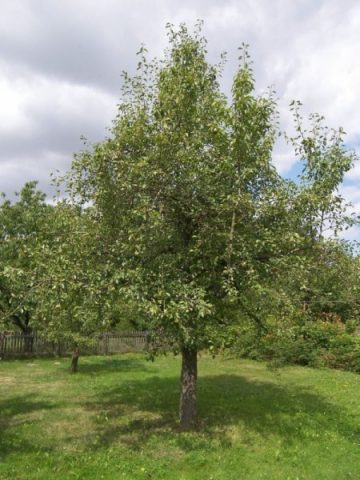
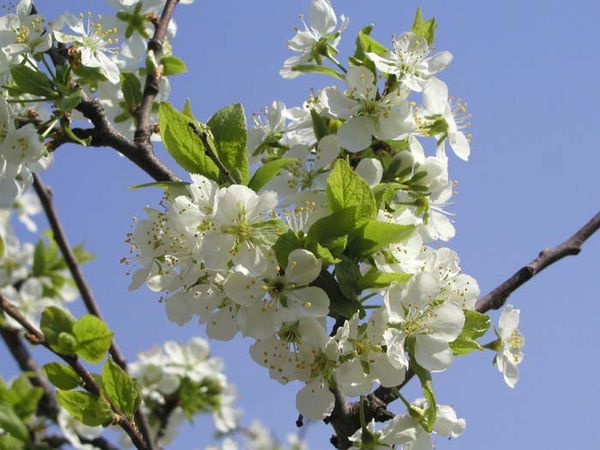
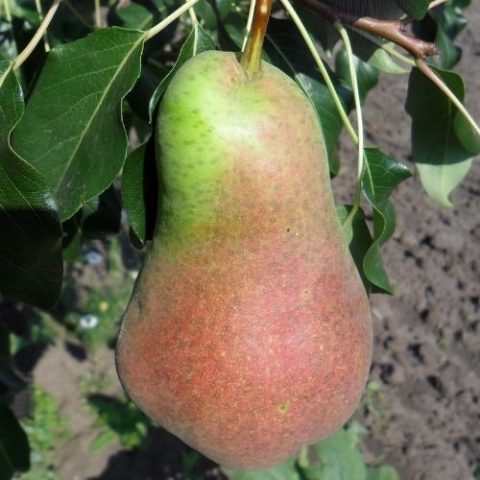

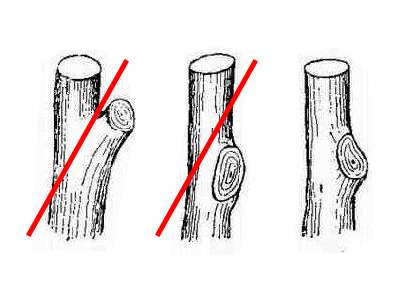
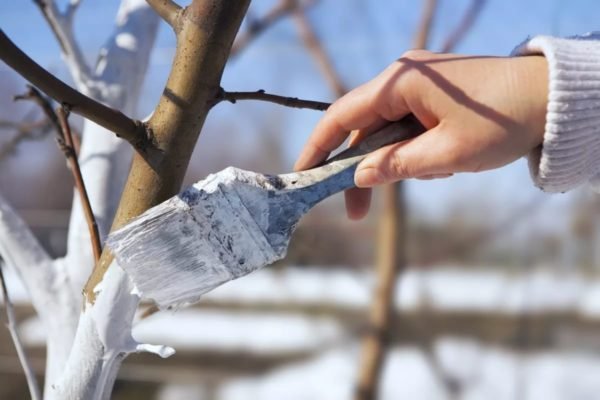
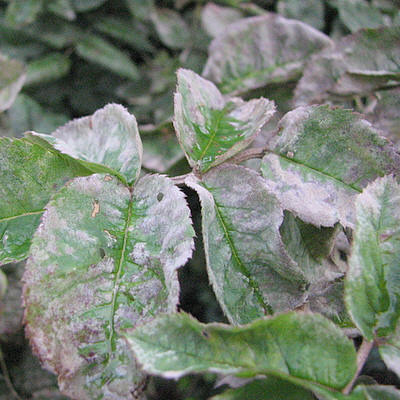
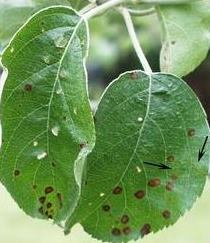
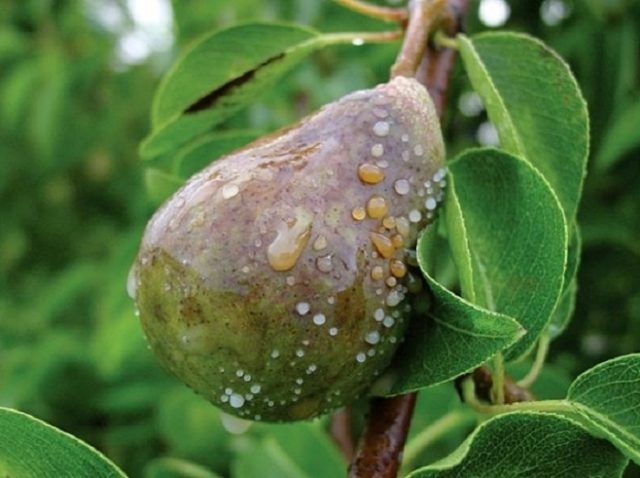

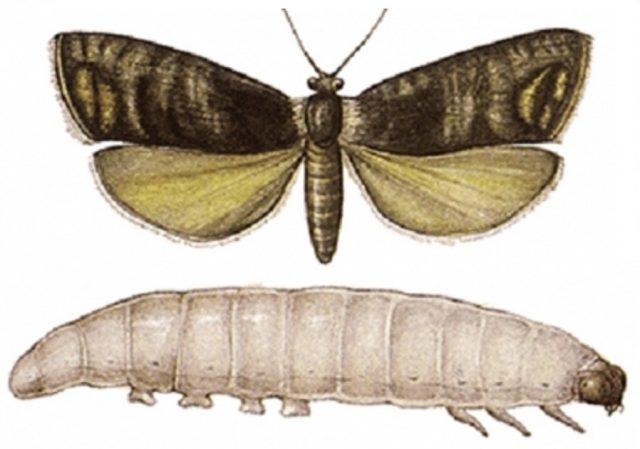
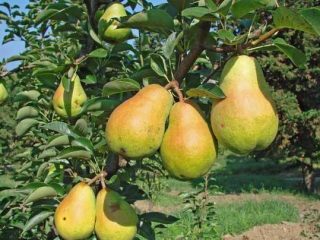

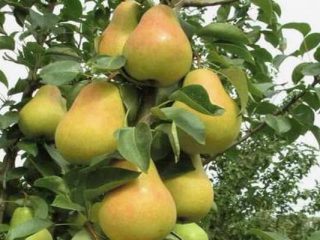
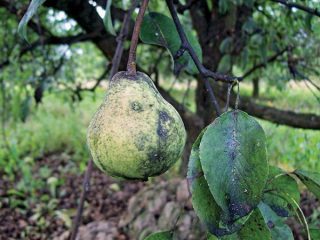
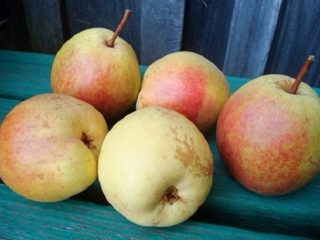
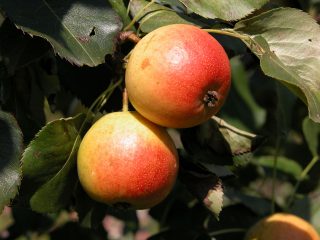
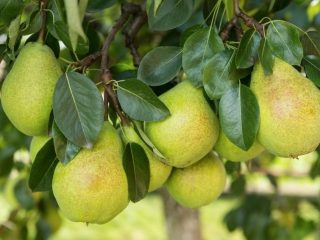

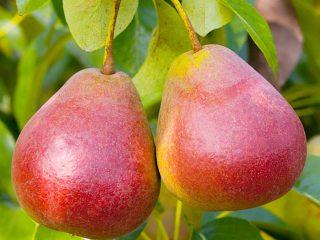
Whitewashing in February is difficult even at the end. The snow cover reaches 1.5. It’s not like whitewashing, you can’t get into the garden.